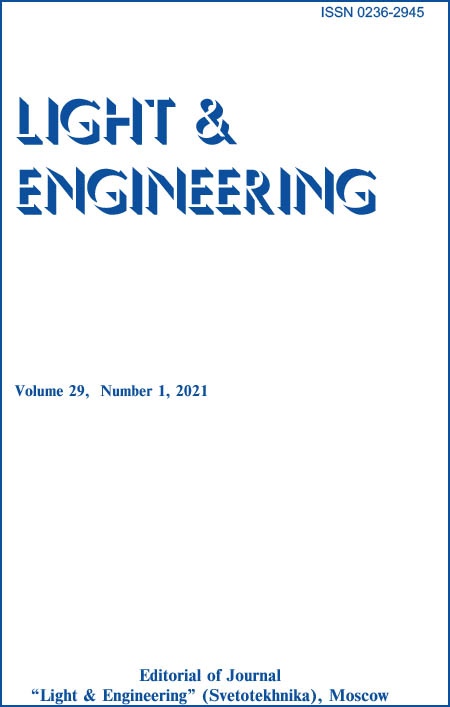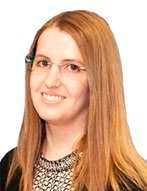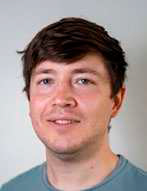Content

Abstract:
For the design of modern office environments, lighting is a central aspect. With regard to current practice, uniform illumination is most often applied in interiors. In this paper, however, further aspects of a more individual approach are investigated, that deliberately violate the usual demands for uniformity by explicitly considering task-related, emotional and psychological effects of lighting. For this purpose, two independent experiments were conducted in an office mock-up setting exploring the impact of spatially variable, non-uniform light distributions on the users’ illumination preferences for the accomplishment of a given task. In the first experiment, three predefined illumination settings wererated by a group of naïve observers. Although the respective light distributions differed in their spatial characteristics, no significant differences were found in the rating scores. In addition, these variations showed no significant effect on the users’ preferred position of task performance. In the second experiment, though, a clearly significant effect could be reported such that, once the users were granted control over the illumination settings, an explicit demand for locally increased illuminance levels at the position of task performance was observed. Furthermore, high rating scores of perceived lighting adequacy indicate the users’ general satisfaction with the degree of visual assistance provided by such a task-related illumination.
References:
1. Boyce P.R., Veitch J.A., Newsham G.R., Jones C.C., Heerwagen J., Myer M., Hunter C.M. Lighting quality and office work: Two field simulation experiments// Lighting Research and Technology, 2006, # 38, pp. 191–223. 2. Veitch J.A., Newsham G.R. Lighting quality and energy-efficiency effects on task performance, mood, health, satisfaction, and comfort// Journal of the Illuminating Engineering Society 1998, # 27, pp. 107–129. 3. Veitch J.A., Newsham G.R., Boyce P.R., Jones C.C., Lighting appraisal, well-being and performance in openplan offices: A linked mechanisms approach// Lighting Research and Technology, 2008, # 40, pp. 133–151. 4. Knoop M. Lighting quality measures for interior lighting with LED lighting systems// Proceedings of the 27th CIE session, Sun City, South Africa, 2011, pp. 219–225. 5. Khanh T.Q., Bodrogi P., Guo X., Anh P.Q. Towards a user preference model for interior lighting Part 1: Concept of the user preference model and experimental method// Lighting Research and Technology, 2019, # 51, pp. 1014–1029. 6. Rea M.S., Mou X, Bullough J.D. Scene brightness of illuminated interiors// Lighting Research and Technology, 2016, # 48, pp. 823–831. 7. Duff J., Kelly K., Cuttle C. Perceived adequacy of illumination, spatial brightness, horizontal illuminance and mean room surface exitance in a small office// Lighting Research and Technology, 2017, # 49, pp. 133–146. 8. Thornton W.A., Chen E. What is visual clarity// Journal of the Illuminating Engineering Society, 1978, #7, pp. 85–94. 9. Hashimoto K., Nayatani Y. Visual clarity and feeling of contrast// Color Research and Application, 1994, # 19, pp. 171–185. 10. Vrabel P.L., Bernecker C.A., Mistrick R.G. Visual performance and visual clarity under electric light sources: Part II–Visual Clarity// Journal of the Illuminating Engineering Society, 1998, # 27, pp. 29–41. 11. Bodrogi P., Guo X., Stojanovic D., Fischer S., Khanh T.Q. Observer preference for perceived illumination chromaticity// Colour Research and Application, 2018, # 43, pp. 506–516. 12. Boyce PR, Cuttle C. Effect of correlated colour temperature on the perception of interiors and colour discrimination performance// Lighting Research and Technology, 1990, # 22, pp. 19–36. 13. Bodrogi P., Khanh T.Q., Stojanovic D., Lin Y. Intercultural colour temperature preference of Chinese and European subjects living in Germany// Light and Engineering, 2016, Vol. 24, # 1, pp. 8–11. 14. Khanh T.Q., Bodrogi P., Vinh Q.T., Stojanovic D. Colour preference, naturalness, vividness and colour quality metrics, Part 2: Experiments in a viewing booth and analysis of the combined dataset// Lighting Research and Technology, 2017, # 49, pp. 714–726. 15. Khanh T.Q., Bodrogi P., Guo X., Vinh Q.T., Fischer S. Colour preference, naturalness, vividness and colour quality metrics, Part 5: A colour preference experiment at 2000 lx in a real room// Lighting Research and Technology, 2019, # 51, pp. 262–279. 16. Flynn J.E., Spencer T.J., Martyniuk O., Hendrick C. Interim study of Procedures for investigating the effect of light on impression and behaviour// Journal of the Illuminating Engineering Society, 1973, # 3, pp. 87–94. 17. Hentschel H.J., Klein E., Leibig J., Roll K.F. Energy-effective direct/indirect office and VDU-lighting systems: Test and Application// Journal of the Illuminating Engineering Society, 1987, #16, pp. 89–105. 18. Loe D.L., Mansfield K.P., Rowlands E. Appearance of lit environment and its relevance in lighting design: Experimental study// Lighting Research and Technology, 1994, # 26, pp. 119–133. 19. Tiller D.K., Veitch J.A. Perceived room brightness: Pilot study on the effect of luminance distribution// Lighting Research and Technology, 1995, # 27, pp. 93–101. 20. Houser K.W., Tiller D.K., Bernecker C.A., Mistrick R.G. The subjective response to linear fluorescent direct/indirect lighting systems// Lighting Research and Technology, 2002, #34, pp. 243–264. 21. Fostervold K.I., Nersveen J. Proportions of direct and indirect indoor lighting – The effect on health, wellbeing and cognitive performance of office workers// Lighting Research and Technology, 2008, # 40, pp. 175–200. 22. de Vries H.J.A., Heynderickx I.E.J., de Kort Y.A.W., de Ruyter B. Wall illumination – Beyond room appraisal// Proceedings of the 28th CIE Session, Manchester, UK, 2015, pp. 284–290. 23. Chraibi S., Crommentuijn L., van Loenen E., Rosemann A. Influence of wall luminance and uniformity on preferred task illuminance// Building and Environment, 2017, # 117, pp. 24–35. 24. Sullivan J.T., Donn M. Light distribution and spatial brightness: Relative importance of the walls, ceiling, and floor// Proceedings of the CIE2016 Lighting Quality and Energy Efficiency Conference, Melbourne, Australia, 2016, pp. 59–69. 25. Luke Roberts Model F datasheet. https://hessenbox.tu-darmstadt.de/getlink/fiNnePviFYwNPtSBVin-3iwi6/Datasheet_Luke_Roberts_Model_F.pdf, last accessed: 2020/07/14. 26. Åkerstedt T., Gillberg M. Subjective and objective sleepiness in the active individual// International Journal of Neuroscience, 1990, #52, pp. 29–37. 27. Klein-Braley C, Raatz U. A survey of research on the C-Test// Language Testing, 1984, #1, pp. 134–146. 28. Hart S.G., Staveland L.E. Development of the NASA-TLX (Task Load Index): Results of empirical and theoretical research// Advances in Psychology, 1988, #52, pp. 139–183. 29. Moosmann C., Vandahl C. LiTG-Fragebogen zur Bewertung von Lichtsituationen// Proceedings of the Lux Junior 2015, Dörnfeld, Germany, 2015. 30. Ishihara S. Ishihara’s Tests for Colour Deficiency: 38 Plates Edition. Tokyo, Japan: Kanehara Trading Inc., 2016. 31. Ichikawa H., Hukami K., Tanabe S. Standard Pseudoisochromatic Plates Part II: For Acquired Color Vision Defects. Tokyo, New York: Igaku-Shoin, 1983. 32. Linksz A. The Farnsworth panel D‑15 test// American Journal of Ophthalmology, 1966, # 62, pp. 27–37. 33. Harris C., Stephens M. A combined corner and edge detector// Proceedings of the 4th Alvey Vision Conference, Manchester, UK, 1988, pp. 147–151. 34. Fisher R.A. On the interpretation of χ 2 from contingency tables, and the calculation of P// Journal of the Royal Statistical Society, 1922, # 85, pp. 87–94.
Keywords
Recommended articles
Weighting the Relevance of the Different Colours in Subjective Assessments of Colour Preference. L&E 28 (3) 2020
Colour Preference Depends on Colour Temperature, Illuminance Level and Object Saturation - a New Metric. L&E 27 (6) 2019
Brightness In The Photopic Range: Psychophysical Modelling With Blue-sensitive Retinal Signals Light & Engineering Vol. 28, No. 5







